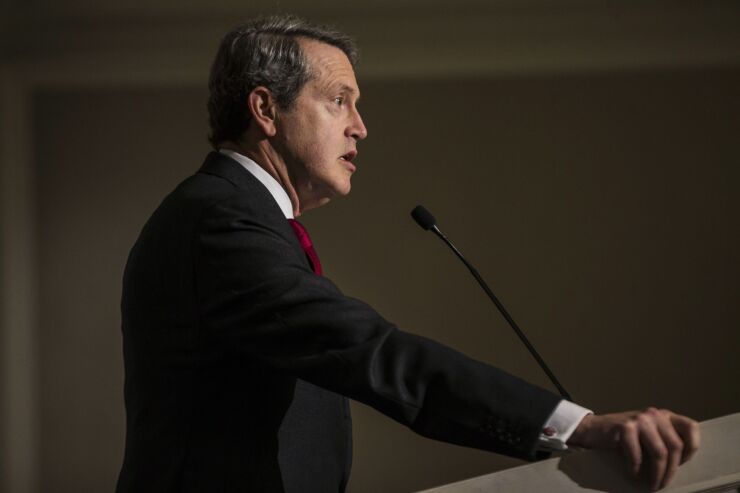WASHINGTON — The Federal Reserve Board on Wednesday voted to finalize a new measure of capital adequacy meant to simplify the agency's stress testing regime.
The Fed proposed the so-called stress capital buffer in April 2018 to
The new plan is expected to result in higher capital requirements for the largest banks, while some smaller institutions still subject to CCAR may get a break.
The final SCB — which the Fed said will be in place for this year’s round of stress tests — resembles the 2018 proposal. It will calculate a bank’s stress capital buffer as the difference between a bank’s starting and projected capital ratios under the “severely adverse” stress test scenario. The buffer will also factor in a bank's common stock dividends as a percentage of risk-weighted assets.

Notably, the final rule removed a bank's leverage ratio — a non-risk-weighted measure of capital adequacy — as a component of the stress capital buffer. The so-called stress leverage buffer requirement in the proposal had drawn industry criticism.
The Fed noted that some commenters had thought that the stress leverage buffer requirement would be inappropriate.
“[The exclusion of the stress leverage buffer] would result in a simpler capital framework and maintain leverage capital requirements as an appropriate backstop to risk-based capital requirements,” the Fed said in a summary of its final rule.
However, the Fed disagreed with some of the commenters that the stress capital buffer was too stringent and redundant. Those commenters argued that given the existence already of a capital surcharge on global systemically important banks and the "countercyclical capital buffer", large banks were already holding sufficient capital.
But the Fed voted to approve the calibration of the SCB as described in the proposal, noting that the GSIB surcharge reflects the risk a firm poses to financial stability, while the stress capital buffer requirement would be calculated based on a bank’s ability to face adverse economic conditions.
“Notwithstanding commenters’ views, each component of a firm’s buffer requirements would serve a distinct purpose and has been calibrated and designed to effectuate that purpose,” the Fed said.
Fed Vice Chairman for Supervision Randal Quarles said that after the financial crisis, the Fed had implemented measures both to strengthen capital requirements and conduct stress tests, but that they were developed in parallel.
“The SCB takes the best elements of both frameworks, establishing administratively simpler restrictions on a firm’s ability to make capital distributions depending on its projected ability to withstand stress,” Quarles said in a statement.
The final rule also includes several other differences from the proposal, including allowing banks to increase their planned capital distributions above the amount included in their capital plans without the Fed’s approval, and changing the definition of “eligible retained income” in non-stress requirements.
A material business change, such as a merger or acquisition, will also no longer be included in the final stress capital buffer requirement.
Under the final SCB, CET1 would increase for GSIBs by approximately 7%, while "systemically important financial institutions" would see their capital requirements decrease by about 10%.
This is partly due to the GSIB surcharge and the removal of the stress leverage buffer requirement, according to Federal Reserve officials.
Fed Gov. Lael Brainard did not support the final rule, saying that she worried it would give “a green light” for banks to slim their capital buffers even though stock buybacks have exceeded earnings for a number of years.
“Banks worked hard to build their capital buffers following the crisis,” she said in a statement. “It is imprudent to reduce the loss absorbing capital at the core of the system at this point in the cycle, when large banks are internationally competitive, and payouts have been exceeding earnings.”
The final stress capital buffer does not incorporate any of the ideas
However, the final rule says that the Fed “intends to propose at a future date modifications to further simplify and increase the transparency of the stress testing framework.”
The Fed also on Wednesday released the instructions for the 2020 CCAR cycle, confirming that 34 banks will participate in this year’s test. The results from those tests are expected June 30.





